The value of content marketing is clear to all in the tech PR domain, but you can’t market the content you don’t have – and the content development process can seem daunting to newcomers and veterans alike.
Some don’t know what to expect from their participation in the content development process, and others perhaps still flinch at memories of past content projects gone haywire for any number of reasons, sapping precious budget, subject matter expert (SME) resources, and time.
We’ve all been there: There’s a gold-priority marketing document developed that’s finally ready for the team’s review, and instead of sailing through the approval process with nary a mark-up, the initial draft brings the team’s workflow to a screeching halt. The draft needs major re-tooling. The endless, iterative editing and review cycles are beyond cumbersome to manage, and the project threatens to go way over budget. Perhaps so much time has passed since the project start date that the document is no longer accurate or even relevant.
All of this can be avoided, however, and a good PR agency will minimize the frictions that would otherwise occur with a content project gone off the rails. Here’s a quick checklist to help ensure that you’re optimizing the writing and review workflows right out of the gate.
1) Know What You Want – This sounds obvious, but start the content project by focusing the subject matter and scope of your project as narrowly as possible, perhaps with a working title in mind. Also, the writer(s) needs to know upfront how and where the content will be used in order to modulate the tone for all target audiences.
If it helps the SMEs gather their thoughts, develop an outline for your content upfront. But do so knowing that you’re potentially adding a thick layer of intermediate reviews and approvals into the workflow process. Which brings us to….
2) ‘The More the Merrier’ Doesn’t Apply Here – When you’re organizing the content session whereby the SMEs are going to impart the storyline to the writer(s), try to minimize the number of spokespersons in the session. There’s an understandable, natural instinct to invite anyone with a viewpoint on a given topic to join in the conversation. But logistically it adds complexity and scheduling delays, and the intended storyline or message may be washed out among the many competing SME inputs to capture and synthesize.
Establish a lead SME empowered to invite additional participants as needed for the content briefing session. This designated lead SME will ultimately sign off on the content before it goes to review with corporate, legal, and creative teams.
3) Don’t Rely on PowerPoint – The business team has gone through a lot of trouble to painstakingly develop a graphics-heavy, eye-grabbing slide deck that sells the story…but forgets to tell it. These presentations are perfect for some settings, but there can be a tendency for SMEs to lean too heavily on them in content sourcing sessions, talking in shorthand around the graphics rather than telling the story in a detailed, linear way. For content sessions, advise your SMEs to speak to the writer as if speaking to an editor in an elevator: You have a relatively short amount of time/runway to capture and hold the editor’s attention, with no audio/visual tools at your disposal. Your words are your only means of persuasion.
And good news! Unlike an editor, your writer(s) will always frame your words in the best possible light, and you can always revise later if needed. So relax, put aside the PowerPoint, and just tell the story.
4) Have an Open Discussion – Some SMEs may feel uncomfortable articulating their own technology’s weaknesses, real or perceived, but this is essential perspective to impart on the content writer in order for him or her to effectively parse the nuances in your favor, convincingly defusing competitor attacks before they gather momentum (without sounding defensive).
Ultimately your SMEs need to be able to answer the following question when interviewed by the writer, in order to adequately protect against messaging vulnerabilities down the line: “What would your competitors say about your technology to criticize or otherwise de-position it with target customers?” The answer may go a long way toward informing your content.
5) Hire a Pro – Your PR agency should have a stable of talented writers inhouse who understand your technology and your audience, and can seamlessly off-load the writing burden from your team (which in turn may make them more inclined to support future content development efforts). In a perfect world, the first draft that your PR agency submits to you will look exactly like the approved final draft – no muss, no fuss – no changes necessary. And your SMEs will all agree that the agency made excellent use of their time to get it done.
Rainier provides expert writing services that take the pain out of the content development process. Most importantly, we’ll ensure that the content is 100% on target with your intended goals –something everyone can be happy with to amplify your message to the market.
For an overview of Rainier’s content development services, click here.






